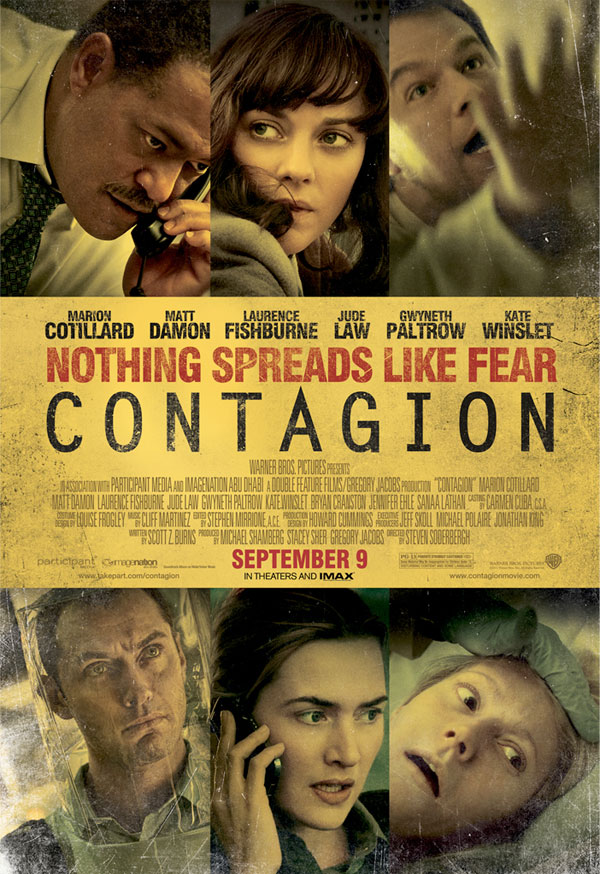How the CDC Would Deal with a Real-Life 'Contagion'

Hollywood loves to bring us worst-case scenarios: catastrophic twisters, Earth-destroying asteroids or, in the case of the upcoming film "Contagion," a rapidly evolving virus that threatens to wipe out global society as we know it.
But while it's a fun fantasy for moviegoers to ask, "What would I do if that happened?" it's actually the job description of Assistant Surgeon General Dr. Ali S. Khan. Khan oversees the brain trust of offices and laboratories set up to respond to the real pandemic threats that inspire movies like "Contagion." The U.S. Centers for Disease Control and Prevention Strategic National Stockpile, the Division of Emergency Operations Center, the Division of Select Agents and Toxins and other offices are constantly monitoring and preparing for a pathogen that could turn into a deadly pandemic. "This is much more than about the health of America. This is about national security, our health security," said Khan, who is the director of CDC's Office of Public Health Preparedness and Response. Khan said the CDC's first line of attack is to know its enemy: the genetics of the virus, how it attacks and who it kills. [5 Most Likely Real-Life Contagions]
"If you don't know what it is, you can't make a lab test for it, you can't make a treatment for it," Khan said. "Everything hinges on knowing what it is."
Disease Surveillance
CDC labs were on the front lines researching SARS, the coronavirus, some strains of the Ebola virus and others before they were under control. Khan said if a virus isn't understood internationally, the World Health Organization and others may send it to CDC laboratories.
"We don't outsource. The buck ends here," Khan said.
The CDC also has more than 500 people placed at county and state health departments "working shoulder to shoulder" with public health officials to track disease, Khan said. Local health departments manage most small outbreaks alone, but if something more widespread strikes, such as the H1N1 outbreak of 2009, the CDC will hear about it quickly.
Sign up for the Live Science daily newsletter now
Get the world’s most fascinating discoveries delivered straight to your inbox.
But while understanding a virus's biology is a priority, officials can't wait to react until the threat is perfectly understood or they will miss the window of opportunity to contain a pandemic, said Ken August, spokesman for the California Department of Public Health.
Containing a contagion
State public health departments have tremendous legal power to take control of a situation with the help of local law enforcement, homeland security or emergency management offices.
A person who has come down with a virus with no treatment or vaccine would be considered "a case," said Dr. Tomas Aragon, director of the Center for Infectious Diseases & Emergency Readiness at the University of California, Berkeley, School of Public Health.
"We do what's called 'case isolation'; you identify them and then you isolate them so they can't infect other people," Aragon said.
Officials could quarantine people exposed to a virus, but haven't yet come down with symptoms. However, officials don't need to know whether someone has been exposed for them to act. In the practice of "sheltering" and "social distancing," Aragon said, officials could restrict the movement of unexposed people to prevent transmission, or to slow transmission among the public at large by closing schools, restricting travel and canceling mass gatherings.
"Yes, there can be isolation and quarantine. In California, a local health officer has broad powers to take whatever actions needed," August said.
But government powers fall short of pulling a person from his or her home, said Kris Eide, director of Homeland Security and Emergency Management for the state of Minnesota.
"The governor can order an evacuation, but we cannot force an evacuation — I think you'll find that in almost every state," Eide said.
Once a virus is identified, the CDC would work with pharmaceutical companies to develop a vaccine, manufacture it, test it for safety with the U.S. Food and Drug Administration and then distribute it through local public health departments, said Dr. William Schaffner, former board member of the Infectious Diseases Society of America.
While the CDC is in the business of developing treatments, Schaffner said local hospitals and officials practice delivering them.
"Public health departments, as well as hospitals, run drills. And by doing so, they do indeed find snags to plans," said Schaffner, who is also chairman of preventive medicine at Vanderbilt Medical Center in Nashville, Tenn.
Eide said a local public health department would take the lead, while her department would provide resources to protect stockpiles, build makeshift clinics or provide any other services needed.
As public health officials tried to save lives, they also would have to work with civilians to keep society functioning through the containment efforts.
"If a chain of grocery stores were to have 25 or 30 percent of their employees sick, how would they be able to keep operating?" said August, who said public health departments would communicate with truck drivers, hospitals and other essential civilian services to keep operations running.
The public health officials noted that communication with the public, even people who can't do anything to help, is a key to controlling a contagion.
"There's the disease, and then there's the fear, and you need communication so that people don't go bananas and cause further disruption," Schaffner said.
This story was provided by MyHealthNewsDaily, a sister site to LiveScience. Follow MyHealthNewsDaily on Twitter @MyHealth_MHND. Find us on Facebook.











